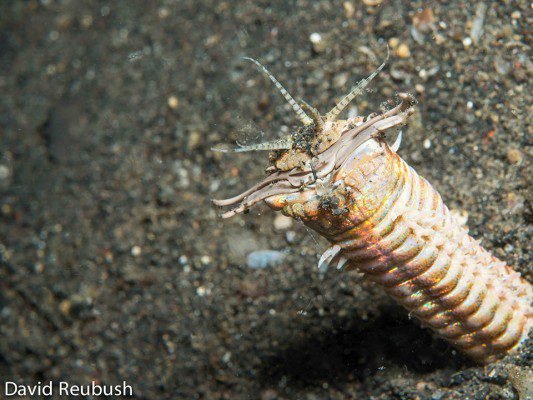
Bobbit worms are fascinating creatures native to the ocean floor, usually found in the warm tropical waters. They spend much of their lives partially buried in the sand, waiting patiently for unsuspecting prey to swim by. Their unique behaviors toward light and movement help them survive in a world where danger lurks around every corner. It’s a bit like playing a high-stakes game of hide-and-seek in the deep blue sea.
So, what’s the scoop about Bobbit worms and their relationship with light and movement? Let’s untangle this mystery together.
What Are Bobbit Worms?
Bobbit worms, known scientifically as *Eunice aphroditois*, are marine polychaete worms that can be found in various coastal regions around the world. Their segmented bodies can grow to impressive lengths, sometimes reaching up to ten feet! Picture this: a creature that looks like a colorful ribbon—green, purple, and red swirling together—waiting silently beneath the ocean floor.
These worms are named after a rather infamous incident involving a woman named Lorena Bobbitt, but that’s a tale for another day. What’s important to know is that Bobbit worms are noteworthy for their striking appearance and unique predatory techniques. They extend their long bodies out of their burrows to catch fish and crustaceans, and believe me, they do so with remarkable speed and precision.
Their fascinating features don’t stop there. Bobbit worms have a set of sharp, jaw-like mandibles, and these jaws can snap shut in the blink of an eye. This incredible speed makes them effective hunters, but how do they react to light and movement in their environment? Let’s take a look at that next.
Bobbit Worms and Light: Are They Sensitive?
So, you might be wondering: how do Bobbit worms respond to light? The short answer is that they tend to avoid direct exposure. In their natural habitat, these worms like it dark and cozy, much like how we enjoy snuggling up under a blanket on a chilly night.
You see, light can signal danger for ocean creatures, and Bobbit worms are no exception. By staying in the shadows of their burrows, they protect themselves from potential predators, like larger fish and even curious divers. This behavior is essential for their survival.
Interestingly, this avoidance of light doesn’t mean they are entirely blind. They have specialized sensory cells that help them detect changes in their environment. So, while they may not exactly “see” light like we do, they can sense it and will instinctively hide deeper in the sand or within their burrows when it gets too bright.
The Connection Between Movement and Bobbit Worm Behavior
Now, let’s chat about movement. Bobbit worms are not just passive observers; they are active hunters! When they sense movement nearby, whether from a fish or a curious shrimp, they spring into action. It’s almost like a high-stakes game of cat and mouse, except in this case, the mouse—being the fish—has no idea what’s coming.
The worms use their keen sense of vibration to detect movement in the water. When they feel vibrations, they pop up from their hiding spots, ready to grab their next meal. It’s as if they have a built-in alarm system that tells them when dinner is within striking distance.
But here’s the catch: while they actively search for food, they still exhibit cautious behavior. If there’s too much disturbance or a sudden change in movement, they’ll retreat back into their burrows. This combination of being both hunters and cautious creatures helps them thrive in their deep-sea environment.
Bobbit Worms: An Adaptation to Their Environment
Understanding how Bobbit worms react to light and movement is crucial for comprehending their role in the ecosystem. They are essentially the stealthy predators of the ocean floor, blending in with their surroundings while waiting for the perfect moment to strike.
Their adaptation is fascinating. Bobbit worms have evolved to have a unique hunting strategy. They don’t chase their prey; instead, they stay hidden and wait for it to come to them. This strategy allows them to conserve energy and increase their chances of catching something tasty.
Moreover, their ability to sense light and movement helps them avoid danger, ensuring they remain hidden from larger predators. In many ways, Bobbit worms are the ultimate survivors of the ocean—masters of both stealth and speed.
The Importance of Habitat for Bobbit Worms
Bobbit worms thrive in specific environments that suit their behavior. They typically inhabit sandy or muddy substrates on the ocean floor, where they can easily create their burrows. You might compare it to having your perfect little corner in a cozy coffee shop, where you can work undisturbed.
These habitats are crucial for several reasons. First, they provide camouflage. The colors of Bobbit worms help them blend into the seabed, making it harder for predators to spot them. Secondly, the soft substrate allows them to burrow effectively, which is essential for their survival.
However, human activities pose a threat to these delicate ecosystems. Pollution and habitat destruction can disrupt the natural balance, making it difficult for Bobbit worms to survive. Understanding their needs reminds us why we should protect our oceans and the life within them.
Bobbit worms are truly captivating creatures, showcasing an impressive blend of adaptability and instinct. Their behaviors regarding light and movement reveal just how finely tuned they are to their environment. While they prefer the shadows and are cautious of potential threats, these worms are also incredibly quick and efficient hunters. It’s a balancing act of survival in the tricky underwater world.
Next time you think about the ocean and its wonders, remember the Bobbit worm. They may not be the flashiest creature on the block, but they play an essential role in their ecosystem. As we learn more about these unique animals, we can better appreciate and protect the fascinating undersea world they inhabit. Each little discovery adds to the rich tapestry of life that exists beneath the waves—don’t you think?
